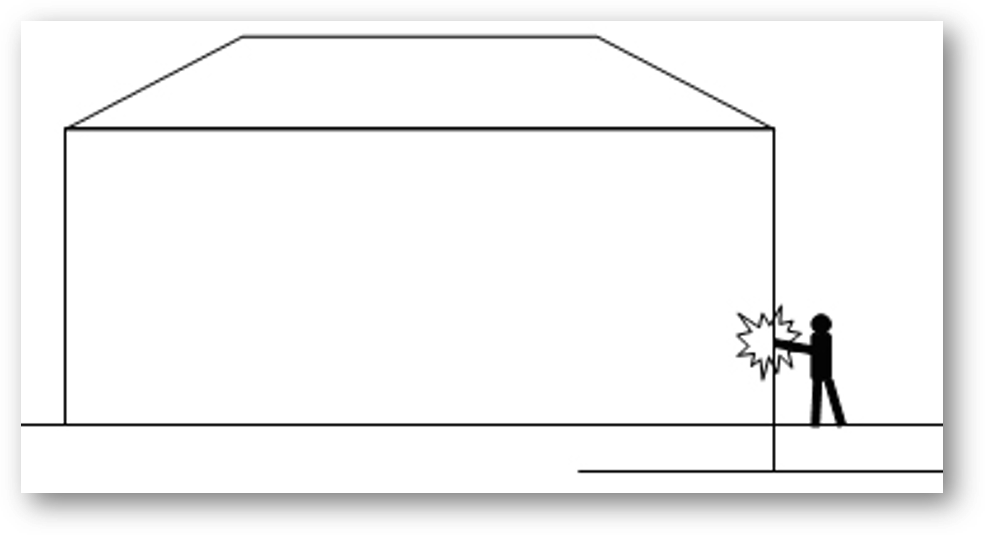Touch Potential Calculations

In electrical earthing systems tolerable touch potentials are a safety performance requirement. Earthing Services engineers frequently undertake the necessary calculations to ensure that sites are safe from the hazards presented by touch voltages.
Touch potential voltages is a way of describing a person’s exposure to electrical current in the event of being in physical “touching” contact with a structure, such as a substation, at the moment it receives fault current. This direct contact with a structure is the most dangerous scenario a human being can experience as the electricity does not have to induct, or flash over to interact with the person, therefore the charge will be undiminished, and it is no longer a calculation about if the electrical current will encounter the person, but how much.
Because touch potential voltages are determined based on the consideration that something has gone wrong in the supply, it has presumes that a person will be exposed to the fault current, and as such they are highly likely to be aware of receiving an electric shock. So frequently in risk assessments do people expect to see that a risk can be controlled to a point that it can never occur that a consideration of accepting that someone will receive an electric shock may seem like the parties responsible have not worked hard enough to prevent its occurrence.
When it comes to fault current from supply to downstream electrical earthing systems there is already a near worst case scenario happening, and being able to protect human life in the event of direct contact during that fault is a tremendous achievement. Ensuring that people only receive a small electric shock, which would have cost them their lives without a high performance electrical earthing system, means that even if someone is unlucky enough to experience the shock, they are actually very lucky indeed. It is worth considering that instances of people experiencing electric shocks as a result of fault electrical current are incredibly rare, but on those few occasions that something may happen it is Earthing Services’ responsibility to keep those people alive.
Earthing Services engineers have a 100% track record of achieving safe touch voltage potentials for the company’s customers. The company’s customers’ sites represent a standard of quality and safety and that is one of the many reasons that new business finds its way to Earthing Services, so that new customers can also attain a comparable level of safety along with the seal of approval that comes with any electrical earthing system designed by Earthing Services’ excellent engineers.
Ascertain fault clearance time
The first part of any touch potential calculation is the fault clearance time. The fault clearance time will ultimately dictate the maximum permissable touch and step voltages. DNOs will normally provide this information as their circuits will be the last to trip in the event of a fault.
Using standards to determine permissible voltages
After receiving confirmation of fault clearance from the appropriate DNO, Earthing Services engineers will refer to TS41-24, or any other relevant standard to determine the permissible touch voltages.
Evaluate touch voltage outputs from CDEGS software
When a soil resistivity model has been developed through the software that is used by Earthing Services electrical earthing system designers, and the facility to be protected has been mapped along with its current or proposed electrical earthing system, the engineers can simulate how it will behave under electrical fault conditions. Much more information is available on these subjects on the relevant service pages of this website, or by using the contact form to get in touch with the Earthing Services team. One aspect of fault current simulation presents likely touch potential issues and overall touch potential performance.
Verify compliance with standards
After concluding the fault current simulation in CDEGS Earthing Services engineers then compare the computed performance with the relevant governing standards to establish whether the electrical earthing system will fall within the tolerable boundaries at the fault clearance time specified by the DNO. In the event that the system does not achieve compliance with the requirements for touch potential then the Earthing Services team would identify that further design works are required to control the fault. If Earthing Services is commissioned to do the design from the outset they will manage the reworks until such a time as the site is safe, if the company is only commissioned to advise on touch potential performance then it will advise its customer of the outcome.
Complete assessment with any applicable recommendations
Once the touch potential calculations are completely concluded Earthing Services engineers will compile a report detailing performance and present it to their customers. In the event that advice, guidance or recommendations are applicable these will be communicated at this time.
